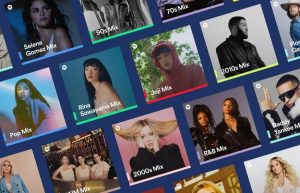In a digital, internet-driven world, speed and convenience trump all. That rule holds especially true for online communication. Today, there are an abundance of ways in which we can reach out and contact someone through the internet. Whether it’s a simple SMS text message, tagging a friend in a tweet, or the classic Facebook ‘poke’ (do people still do this?), the ways in which we communicate have become simplified—and at the same time—more sophisticated.
There is an interesting phenomenon taking place today. It wasn’t too long ago when parents and school teachers were worried that ‘text-speak’ was ruining the English language, creating a generation of socially inept illiterates. Today, that concern is shifting over to none other than “emojis”. A sort of digital hieroglyphics, emojis succinctly (yet maybe not always accurately) communicates a user’s emotion, idea, or thought as a picture icon.

However, can something as complex as human emotion be rendered as a simple, generic icon? Not always. But that’s beside the point. Love them or hate them, emojis are taking over, and marketers are taking notice.
Emojis were invented in Japan and took off in the Western world when Apple released the ‘official’ emoji keyboard for iOS 5. However, emoji use really started to skyrocket among Instagram users. The social media giant recently announced that “nearly half of comments and captions on Instagram contain emoji characters”. The phenomenon has become so prevalent on the platform, that Instagram now even allows emojis to show up in hashtags and search.

[This timeline does a better job at driving the point home. This graph (via Instagram) shows percentage of emoji use in Instagram messages over the last five years]
Social media agencies and digital marketing professionals are finding new opportunities amidst this emoji craze. From McDonald’s releasing their own line of messaging app stickers, to Domino’s allowing customers to order by tweeting a pizza emoji, the floodgates are officially open for innovative marketing. Savvy brands understand the benefit of tapping into the wellspring of digital natives that brought about the emoji revolution in the first place. Yet, will these pictorial messages cease to be ‘cool’ once more brands and older generations catch on? One needs to only look at Facebook to find the answer to that question.
Nonetheless, emojis are seen as a less intrusive form of advertising, allowing brands to be playful with their marketing while being able to show their human side—which, if you’re a digital marketer, you know is a big plus. Another point to consider is that consumers’ attention spans are becoming increasingly limited. Between the constant barrage of mobile pings, social media notifications, work-related e-mails, and all that ‘real-life’ stuff we have to do, marketers must vie for the consumer’s attention like never before. Emojis are a great way to cut through the noise and communicate a message fast and easily. After all, if a picture says a thousand words, an emoji must be able to say at least half that… right? 😉
(150)







